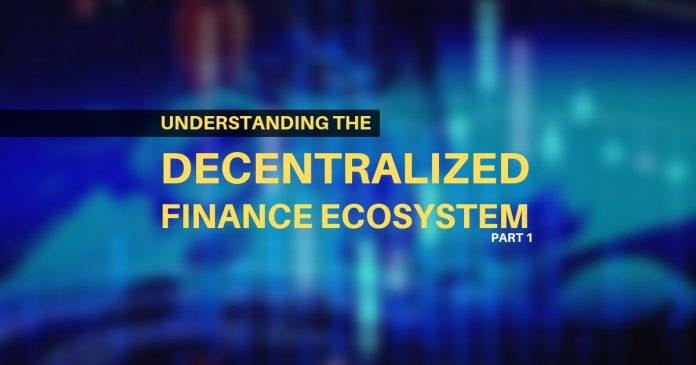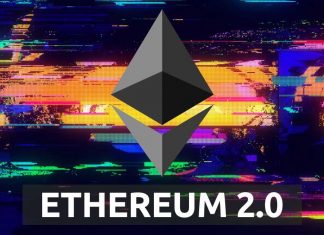Welcome to Part 1 of this series. We will try to explain the basics of Decentralized Finance ( DeFi ), evaluate why it’s different from traditional financial systems and how will it change the future. Besides, we will also talk about some interesting applications of DeFi.
Introduction to Decentralized Finance:
- The Financial Stability Board (FSB) recently published a detailed report, covering the financial stability, regulatory and governance implications of the use of decentralized financial technologies. During a G20 summit in Fukuoka (June 8-9,2019) the Finance Ministers and Central Bank Governors read this report.
- The second-largest stock exchange in the world, Nasdaq, recently added a Decentralised Finance Index
- Within one year (December 31, 2017 to December 31, 2018), the volume of active loans outstanding through decentralized lending protocols increased by a staggering 1083%!
So, why are more and more people feel like DeFI is a thing? What is the value?
What is Decentralized Finance?
Decentralized Finance (DeFi) is an ecosystem of financial applications based on open-source protocols or modular frameworks created on the blockchain. Hence, it is traditional finance. However, the underlying technology is blockchain. DeFi has notable advantages like censorship-resistance and improved access.
How is it different from Traditional Finance?
“Whereas Wall Street [provides] financial services where the ultimate ‘settlement layer’ is courts and legal proceedings, DeFi [provides] financial services where the ultimate settlement layer is code,” Brendan Forster, co-founder and COO at Dharma (Quartz)
- Programmable: By using smart contracts, developers can program business logic into decentralized financial services applications.
- Permissionless: Since its an open-source system, developers can freely build things on top of decentralized systems without asking for permission.
- Decentralized: Records are kept simultaneously across thousands of computers instead of a central server.
- Trustless: A central party cannot invalidate a user’s transactions, reverse changes, or shut down a network. Community members, especially developers and token holders participate in governing the financial system, reducing the concentration of power and control.
- Transparent: Once a transaction is validated by the code, including inside a block, and confirmed by subsequent blocks, it becomes permanent, verifiable, and secure.
- Interoperable: Decentralized finance can be made interoperable across different services.
- Borderless: Money and value can flow seamlessly across different services and borders, potentially creating the internet of value and promising true global citizenship.
What will be the impact of Decentralized Finance?
- Global access to financial services: Decentralized finance removes barriers of locations, wealth and status, thus enabling everybody to access financial systems. For example, DeFi allows a person in Africa, to whom financial services are currently unavailable, to gain access to things like loans, mortgages, and insurance. All they need is a smartphone and an internet connection.
- Affordable cross border payments: Remittance services will be more affordable.
- Improved Privacy and Security: Users have full custody of their own wealth and can transact without the intervention of a third party.
- Censorship-resistant Transactions: Transactions are immutable and blockchain cannot be shut off by the central institutions.
- User-friendliness: Decentralized apps will be simple and user-friendly plug and play apps.
Limitations of Decentralized Finance
DeFi’s journey is just starting. Let us have a glimpse of some market insights.
- The sector has seen plenty of money pouring into it recently. In 2017, Bancor raised $150 million in three hours. Two years later, it is struggling at Rank 132 (Coinmarketcap data). Its cap is only $25 million (as of 22nd Sep 2019).
- MakerDAO, one of the most important Ethereum applications, still requires over-collateralization (ie, pledging $300 of ether to borrow $200 of Dai, another crypto).
- If we look at the DeFi Review, we will see that only 2 projects MakerDao and EOSREX, dominates the market.
This leads to the question, what are the current limitations of decentralized finance?
- Trust: The technology is not user-friendly and is prone to vulnerabilities. Also, with so many hacks currently happening in the crypto space, decentralized finance applications need to be bulletproof. Security protocols are needed to be put in place and trust will gradually develop with time.
- Education: We are still in the phase where a majority of the population does not even know what blockchain is, let alone decentralized apps. This is why education is the key.
So, it is not only about adoption, but also about building a working product. The kind of product that has a long term vision and solved problems, which centralized financial services can’t. At the same, being compliant with regulations is a must.
Decentralized Finance categories
- Decentralized Exchange Protocols (DEX): DEXs are P2P exchanges of assets in which no third-party acts as the intermediary in a transaction. Innovative methods like atomic swaps and other non-custodial means for exchanging enables them to swap one asset for another with minimal settlement time or risk.
Example: 0x, Loopring, IDEX
Non-fungible tokens (NFTs) marketplaces are slowly coming into picture. These platforms facilitate the exploration, discovery, and buying/selling of crypto assets.
Example: OpenSea, Rarebits
- Stablecoins: A stablecoin is the bridge to the traditional financial system. It is an asset that offers price stability characteristics making it suitable as a medium of exchange, unit of account, and a store of value.
Example: Paxos, Gemini Dollar, True USD - Lending Protocols: Decentralized Lending Protocols allows an individual to access to a much wider pool of willing lenders. There is no need for the central bank to intervene.
Example: MakerDAO, Dharma, Lendroid - Derivative Protocols/Prediction Markets: In a decentralized prediction market, there is no central authority regulating and controlling the entire prediction market (taking of bets, the selection of the events to bet on, and also the payouts). Thousands of users whose activity and reporting validates outcomes maintain the integrity of the market.
- Example: Augur, Gnosis
- Tokenization Protocols-
A security token is a tokenized, digital form of these traditional securities. A security token doesn’t need to have a utility. Example: Harbor, Polymath - KYC/AML/Identity – In decentralized identity solutions, the central party does not retain a user’s identity details nor can it use the details for its own convenience, without the prior permission of the user.
Example: Bloom, SelfKey
Conclusion:
Decentralizing everything is not the solution. We need to do this transition very carefully. And we need phases. After all, DeFi is still at a very early and experimental stage. The technology is not user-friendly and prone to vulnerabilities.
Also, there are challenges pertaining to scalability, security, regulations, and liquidity. We need to solve these problems, improve security tools and protocols and be regulation compliant.
Till then, we foresee that both the centralized and decentralized systems will integrate with each other and create a hybrid system (eg, BlockFi).
In Part 2 of this series, we will handpick one Top project from each Defi category.
References
White Paper: Decentralized Finance: Blockchain Technology and the Quest for an Open Financial System





























A good article about DeFi. Some of the most demanding application of Defi is decentralized exchanges, which customers can sell and buy cryptocurrency with any interference of intermediaries. Since it requires less wok force the fee is comparatively very less than centralized exchanges.